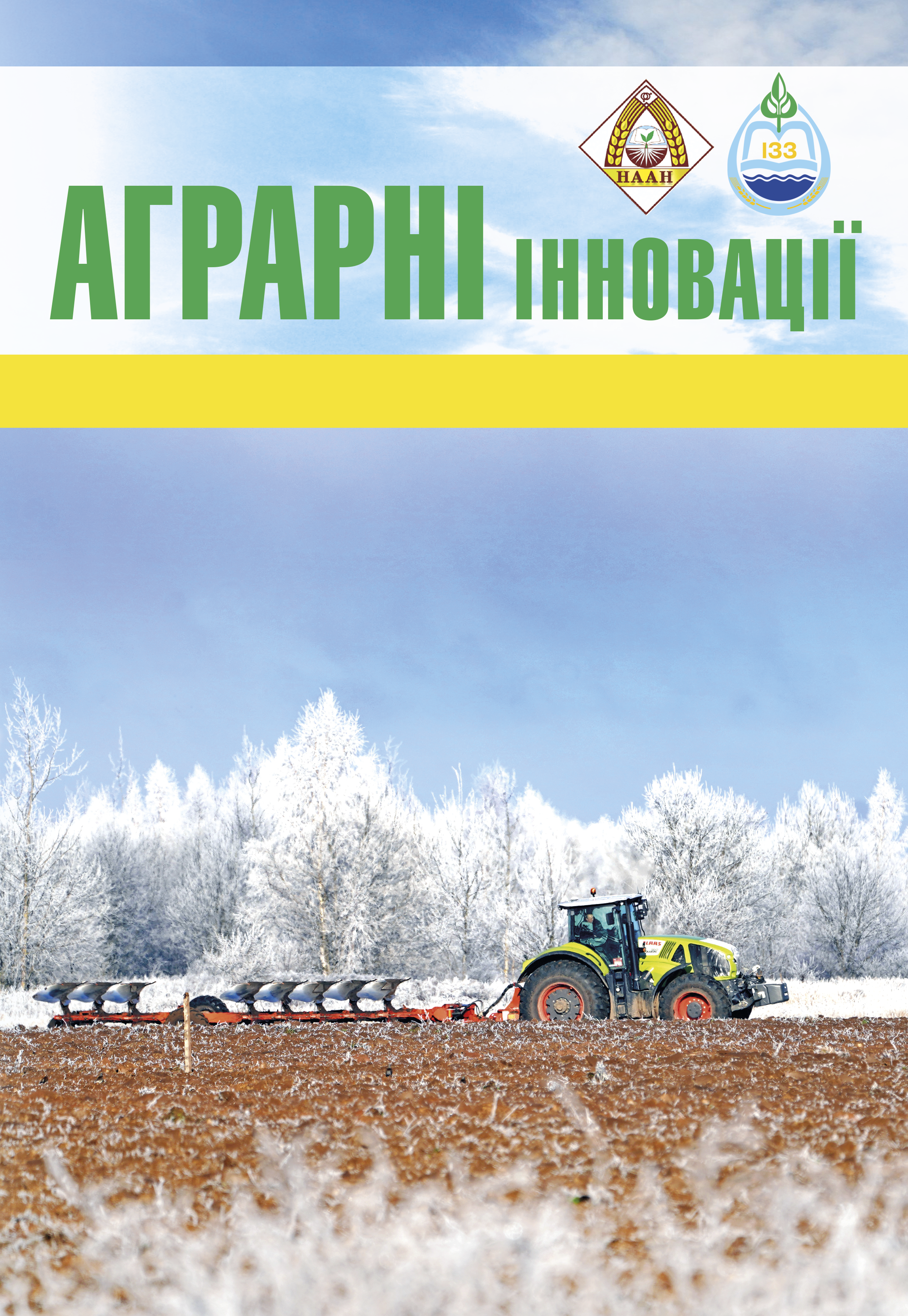The influence of the fertilization system on the productivity of buckwheat varieties of different morphotypes in the conditions of the North-Eastern Forest Steppe of Ukraine
Abstract
Purpose. In the conditions of the zone of unstable moisture in the North-Eastern Forest Steppe of Ukraine, the aim was to determine the reaction of buckwheat varieties of different morphotypes to the application of different fertilizer options, namely, indicators of productivity and technological qualities of grain. Methods. General scientific and special methods were used during the research: field; quantitative; measuring and weighing; test beam method; method of continuous division harvesting according to the «Methodology of the State Varietal Testing of Agricultural Crops». Statistical processing of yield data was carried out by the method of variance analysis using the Statistica for Windows application program package. Results. As a result of research conducted with buckwheat varieties of different morphotypes, we established that the productivity of buckwheat fluctuated between 1.47–2.11 t/ha depending on varietal characteristics and fertilizer doses. On the options with the introduction of mineral fertilizers, yield increases from 0.14 to 0.51 t/ha were obtained. The nature of the grain in the studied varieties increased by 11–26 g/l depending on the fertilization systems. According to the Slobozhanka variety, a positive reaction to the level of the N45P45K45 (634 g/l), N30P45K45 + N15 (636 g/l), N50P30K70 (638 g/l) fertilizer was found in comparison with the control variant (without fertilizers) in on average, over the years of research, the increase in the values of this indicator was 9–13 g/l. The determinant variety Yaroslavna showed a varietal response to the formation of the grain fullness index in a slightly different way. The maximum grain quality was 623 g/l (2021–2023) on the options N30P45K45 + N15 and N50P30K70 (calculated), which was higher than the control (without fertilizers) by 11 g/l. It was established that, on average, over the years of research, the weight of 1000 grains increased by 0.3–2.1 g when fertilizers were applied to both varieties. Over the years of research, a trend of positive influence of fertilizer options on buckwheat grain quality indicators was observed, the varieties showed maximum adaptation to weather conditions every year, especially in critical phases of the growing season. According to the results of determining the productivity elements of buckwheat plants, it can be noted that the use of different fertilizer options, as well as varieties of different morphotypes, has a positive impact on the quantitative productivity indicators, which significantly exceed the control indicators. Conclusions. During the research, attention was paid to the solution of the scientific problem of increasing the productivity and quality of buckwheat grain depending on the methods of cultivation technology in the conditions of the North-Eastern Forest Steppe of Ukraine. The maximum yield on average over the years of research on the Yaroslavna determinant type buckwheat variety was at the level of fertilizer N30Р45К45+N15 (1.96 t/ha). In the Slobozhanka variety (normal morphotype), the highest yield of 2.11 t/ha was obtained on the variant with the estimated dose of fertilizers (N50P30К70). In years favorable for hydrothermal indicators, the highest yield rate of 2.93 t/ha (Yaroslavna) and 3.52 t/ha (Slobozhanka) was obtained on the variant with the introduction of the estimated dose of fertilizers (N50P30К70). Quality indicators of grain (nature, mass of 1000 grains) reached a maximum against the background with application rates of N16P16K16 + N15 and N50P30К70 (calculated dose).
References
2. Кабанець В.М., Страхоліс І.М. Агротехнічні прийоми вирощування круп’яних культур для умов північно–східного Лісостепу України. Інститут сільського господарства Північного Сходу НААН. Сад. 2017. 20 с.
3. Троценко В.І., Кліценко А.В. Адаптивний потенціал гречки в умовах північно–східного Лісостепу України. Вісник Сумського НАУ, серія «Агрономія і біологія». Суми, 2016. Вип. 9 (32). С. 192–196.
4. Long Jiang-xue, Cheng Hui-yan, Dai Zhi-neng, Liu Jian-fu. The Effect of Silicon Fertilizer on The Growth of Chives. IOP Conference Series: Earth and Environmental Science, 2018. Vol. 192, P. 1–6.
5. Kalinová J., Moudrý J., Čurn V., 2005. Yield formation in common buckwheat (Fagopyrum Esculentum Moench). Acta Agronomica Hung., 53, 283–291. https://doi: 10.1556/AAgr.53.2005.3.5.
6. Тригуб О.В., Куценко О.М., Ляшенко В.В., Ногін В.В. Важливість вирощування гречки як унікальної й екологічно орієнтованої культури. Scientific Progress & Innovations. 2022. Вип. 1. С. 69–76. https://doi.org/10.31210/visnyk2022.01.08
7. Jaroszewska, A., Sobolewska, M., Podsiadło, C., and Stankowski, S. (2019). The effect of fertilization and effective microorganisms on buckwheat and millet. Acta Agroph., 26(3), pp.15–28. https://doi.org/10.31545/aagr/114016
8. Ляшенко В.В., Сахно Т.В., Тригуб О.В., Семенов А.О. Фізіологічна реакція рослин сортів гречки посівної Fagopyrum esculentum moench за умови різних режимів гідропраймінгу на ранніх етапах онтогенезу. Scientific Progress & Innovations. 2022. № 2(2). Р. 30–38. https://doi.org/10.31210/visnyk2022.02.03
9. Методика проведення експертизи та державного випробування сортів рослин зернових, крупяних та зернобобових культур. Державна служба з охорони прав на сорти рослин. 2003. № 2(3). 214 с.
10. Царенко О.М., Злобін Ю.А., Скляр В.Г., Панченко С.М. Комп’ютерні методи в агрономії та с.-г. біології. Суми. Університетська книга, 2000. 203 с.






